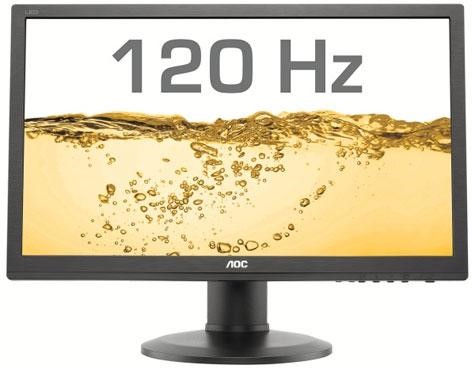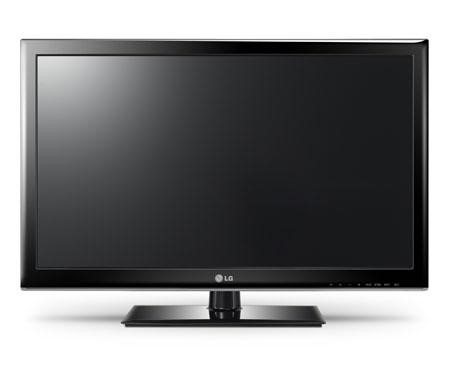| Ние се стремим да локализираме нашия сайт в колкото се може повече езици, колкото е възможно, но тази страница в момента е машина за превод, използвайки Google Translate. | близо |
-
-
продукти
-
източници
-
поддръжка
-
компания
-
Computer Monitor Refresh Rates & Време за реакция обясненоComputer Monitor Refresh Rates & Response Time Explained
От Steve Horton Май 23, 2013monitor, refresh rate, response time2 CommentsЕдно от най-важните неща, които трябва да имате предвид при закупуването на компютър, е мониторът, който ще използвате с него. Колко висока е резолюцията? Какъв е времето за реакция? Колко голям е? Какъв вид пристанища е необходимо? Защо всичко това има значение? Какви са тези неща?
Не бойте се.
Аз съм тук, за да помогна.

Пример за монитор от 120Hz.Hz? Какво е Hz? Това хубаво ли е?
Един от най-важните аспекти на монитора е времето за реакция, а също и неговият Hz. Hertz в монитора е просто колко пъти се опреснява за секунда – 60Hz е добре за повечето неща и 120Hz е overkill – освен ако няма да гледате съдържание в 3D, в който случай панел от 120Hz е необходим, ако искате да преглеждате съдържанието си, без да имате значително забавяне. Времето за реакция е различна – колко бързо всеки от пикселите реагира на входа, изпратен от вашия компютър. Пет ms е за предпочитане и 8 ms е малко laggy – обаче, по-голямо време за реакция става все по-малко необходимо, толкова по-голям е вашият екран. Ако обаче сте хардкор геймър, вие определено ще искате да търсите монитори с по-ниско време за реакция. Някои монитори достигат до 1 ms.
Размерът на монитора е различен. Колкото по-голям е мониторът ви, толкова по-експоненциално той ще се увеличи в цената – и след като изминете по-малко от 27 инча, разликите просто стават съвсем смешни. Всъщност, 32-инчовият HDTV е по-евтин от 32-инчовия монитор!

Пример за 32-инчов монитор.Така че това е, което трябва да купя, нали?
Има причина мониторите да са по-скъпи в този размер, за съжаление. Всички HDTV имат зададена резолюция от 1080p – и колкото по-голям е екранът, без да се увеличава резолюцията, толкова по-трудно е да се чете текст, особено ако сте достатъчно близо, за да използвате телевизор като монитор. За повече информация относно използването на телевизор като монитор, консултирайте се с тази статия.
Мониторите със същия размер имат двойна, понякога тройна резолюция, за да компенсират удобството на потребителя и разстоянието от екрана. За резолюции, по-високи от 1080p, ще ви е необходима видеокарта и монитор, съвместими с DVI. Пристанищата са необходими за допълнителна функционалност – уверете се, че видеопортовете на компютъра ви са съвместими с пристанищата на монитора ви – в противен случай, без да купувате адаптер, инвестицията ви ще е загубила печалба.
Последните няколко неща, които трябва да се имат предвид, са цените и типът панели. Ако можете да си го позволите, купете светодиод върху LCD, тъй като те са много по-леки. Ако сте геймър, не купувайте плазмен екран – в допълнение към това, че са лесно повредени, те имат по-кратък живот и не могат да се справят с високите кадри почти както и братовчедите си.
Was this post helpful?YesNoБезплатно Обновяване на драйверите
Актуализирайте драйверите си за по-малко от 2 минути, за да се насладите по-добре PC производителност - Безплатно.
Безплатно Обновяване на драйверите
Актуализирайте драйверите си за по-малко от 2 минути, за да се насладите по-добре
PC производителност - Безплатно.
Не намерихте отговор на въпроса си?Задайте въпрос към нашата общност от експерти от цял свят и да получи отговор в нито един момент на всички.most relevant Последни статии Компания| Партньори| EULA| Правна информация| Не продавайте/не споделяйте моята информация| Управление на моите бисквиткиCopyright © 2025 Corel Corporation. Всички права запазени. Условия за ползване | поверителност | CookiesЗакачете го в Pinterest